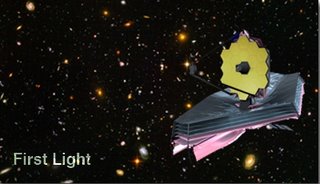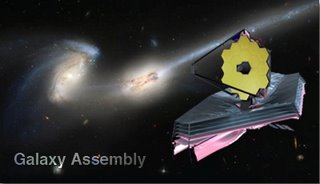First Light

The Hubble Ultra Deep Field of galaxies
(Credit: NASA, ESA, S. Beckwith (STScI) and the HUDF Team)
_______________________________________________________
The James Webb Space Telescope (JWST), the orbiting infrared observatory designed to succeed the Hubble Space Telescope, is set to enable fundamental breakthroughs in our understanding of the formation and evolution of galaxies, stars and planetary systems.
The project is led by NASA, with major contributions from the European and Canadian Space Agencies. The telescope is scheduled for launch in 2013 for a mission of 5-10 years.

Colliding galaxies, NGC 4676, known as The Mice
(Credit: NASA, H. Ford (JHU), G. Illingworth (UCSC/LO), M.Clampin (STScI), G. Hartig (STScI), the ACS Science Team, and ESA )
_______________________________________________________
Webb’s instruments will be designed to work primarily in the infrared range of the electromagnetic spectrum, with some capability in the visible range.
The longer wavelengths enable JWST to look much closer to the beginning of time and to hunt for the unobserved formation of the first galaxies, as well as look inside dust clouds where stars and planetary systems are forming today.
Webb’s scientific goals are split into four distinct themes: The End of the Dark Ages - First Light and Reionization; The Assembly of Galaxies; The Birth of Stars and Protoplanetary Systems; and Planetary Systems and the Origins of Life.
_______________________________________________________
_______________________________________________________


<< Home